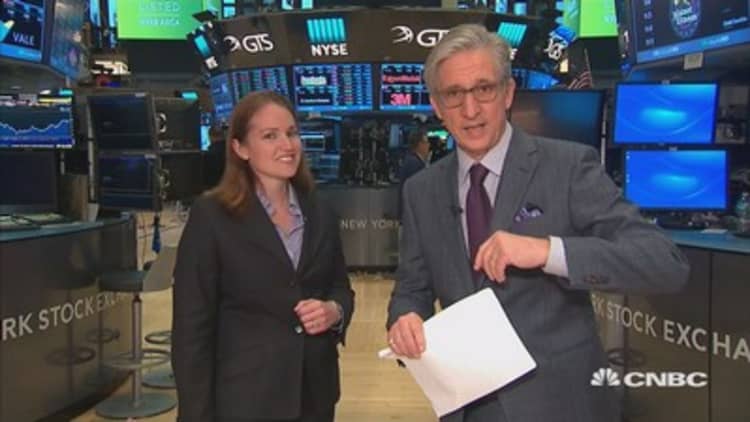I just finished my usual round of calls to a few trading desks, and I heard a familiar refrain: Volume and volatility are low. The stock trading business is slow.
This has been going for a long time, but the complaints are getting louder, and we are seeing firms take action.
Back to the question: Why are volume and volatility so low? It's not an illusion. One measure, realized volatility — which is the actual volatility of the over successive 30-day periods — is near historic lows.
This bothers traders, and not just because it's bad for business, but because it seems, darn it, that there should be more volatility. It seems to most of them that given uncertainty in Europe, uncertainty with the Trump agenda, and uncertainty with the global economy, well, it just seems like the Volatility Index should be a lot higher than 12.
Larry Tabb, one of the best market structure experts in the country over at Tabb Group, expressed the frustration perfectly to me: "I have no clue why the VIX is at 11 / 12 instead of 16 or 18." He notes that given the defeat of health care and a budget that looks pretty problematic, you could argue the VIX should be closer to 20.
There are several explanations for why the markets seem so sluggish:
1) Thanks to advances in trading technology, the market has become extremely efficient. "With automated traders and news box traders the prices of stocks — supply and demand — is extremely efficient," Sean Hendelman at T3 Trading Group told me. "Not only that, when there is news on a stock or industry group the speed at which the underlying names are efficiently priced is almost immediate."
Other changes in trading methodologies may also be making the markets less volatile. "I think that many of the countermeasures that investors now use in portfolio construction, dynamic asset allocation, hedging, structured trades, are designed to reduce volatility, and collectively they may be working," George Calhoun, Director of the Quantitative Finance Program at the Stevens Institute of Technology, told me.
2) Exchange-traded funds are reducing volatility because you can trade the ETFs without trading the underlying stocks. This makes some sense; the whole move to passive investing has likely tamped down volatility. "No one is figuring out if Coca-Cola or Pepsi should be worth more or less — folks are just buying Coke and Pepsi based upon their market cap," Tabb noted.
3) The Fed has tamped down volatility for years by keeping rates low and essentially encouraging people to buy equities due to its quantitative easing program. While that is now ending, continuing quantitative easing programs by the Bank of Japan (BoJ) and the European Central Bank (ECB) are tamping down volatility overseas.
"The Fed has passed the baton to the ECB and the BoJ," said Peter Cecchini, co-head of Equities at Cantor Fitzgerald.
He noted that the ECB continues to buy corporate debt, keeping refinancing rates low globally, and the BoJ is acting directly on risky assets by buying ETFs and equities.
All this low volume and low volatility is having an impact on the stock trading business. It doesn't matter the markets are near new highs. If no one is trading, or everyone is moving to passive investing, well, that is a big problem.
This has now gone on so long that firms are acting.
Last week, The Wall Street Journal ran a big story about how BlackRock was moving toward computer programs to help pick stocks, rather than humans, for its actively managed portfolios.
Than word came that high-frequency trading firm Virtu Financial was making an offer to buy Knight Capital. High frequency firms thrive on high volatility, and without it they are struggling to grow as well.
Today we learn that Cowen is purchasing fellow trading firm Convergex for $116 million.
What's it all mean? It means it's tough out there. It means that the trading world is changing fast, and that firms must find ways to reduce costs or gain economies of scale.
Oh sure, the VIX will pop again in response to some external event. I'm not talking about that. I'm talking about day in and day out, average trading with no big catalyst.
I'm talking about whether there is some long-term structural issue that is keeping volatility low, and it certainly does appear that way.
Watch: Recent bond action



